


FADEAWAY
The Team Time Forgot
By Dan Good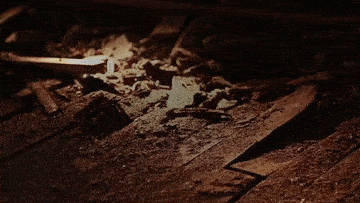
The crowd snakes beside crumbling bricks, past the shadows and cobwebs. The group waits to enter a nearby church. They didn't expect a history lesson.
But there are two men standing on the sidewalk – one speaking softly; the other shouting in an overcoat and derby hat.
“Save ... Harlem ... now!" the man in the overcoat shouts, again and again, until his voice cracks.
The other man talks about a basketball team that used to play inside the forgotten building with the crumbling bricks, once the greatest basketball team in the world. Following decades of neglect and unfulfilled redevelopment plans, the building is slated for demolition, mirroring the team’s obscured historical visibility.


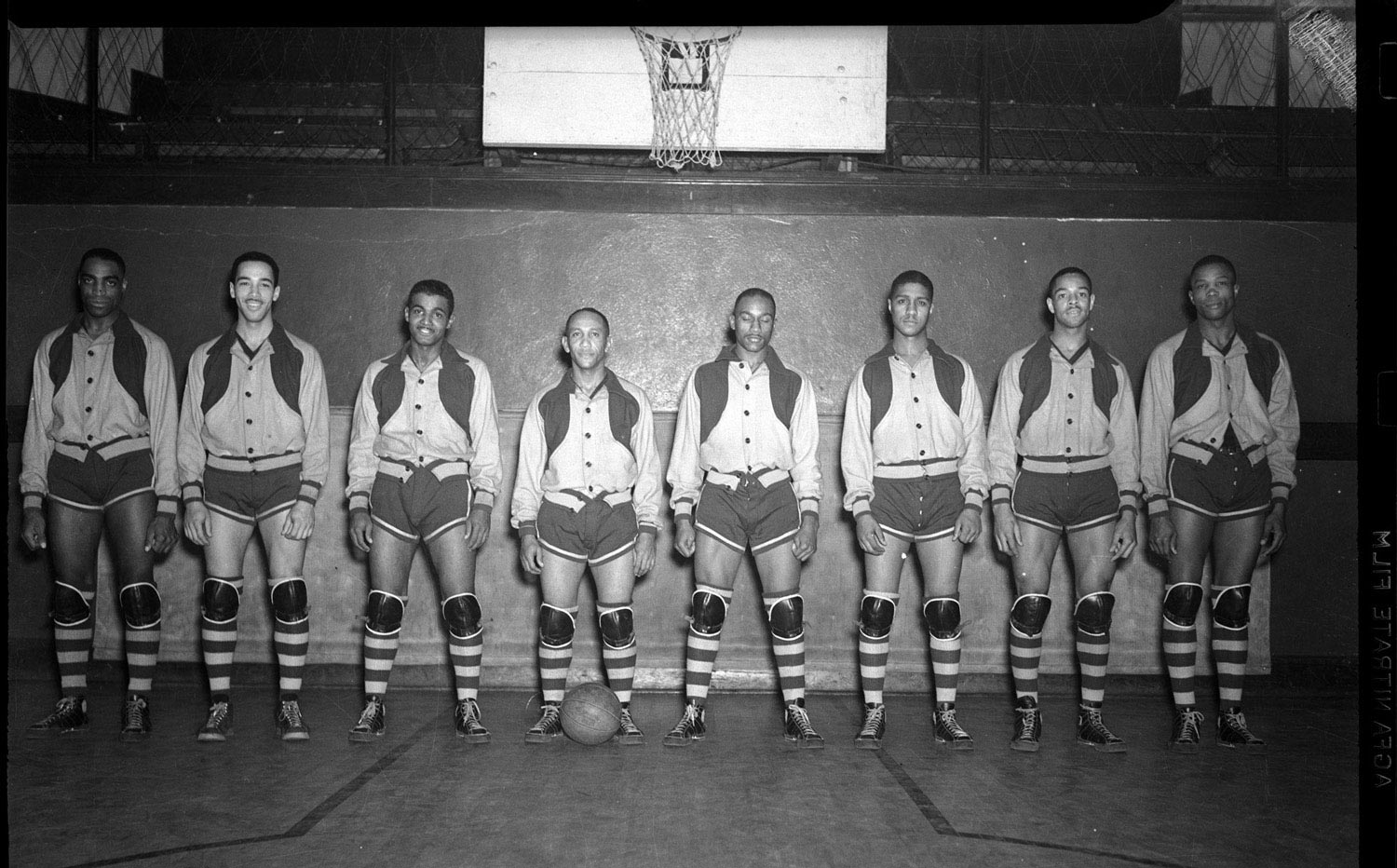
Bob Douglas needed a place for his team to play. A native of the British West Indies, Douglas fell in love with basketball after coming to America in the early 1900s. He ran two New York-based amateur teams – the Spartan Braves and Spartan Hornets. With amateur basketball in a state of flux following World War I, Douglas sought to have the first black-owned, all-black pro team.

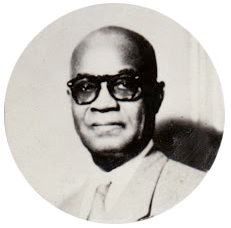
Douglas found a home with the help of developer William Roach and his Renaissance Ballroom and Casino in New York City’s Harlem neighborhood. The building, designed by architect Harry Creighton Ingalls, was meaningful but unassuming, with arched Palladian windows and a facade of red brick. Historian and author Michael Henry Adams said the building's flourishes, including polychrome, Hispano-Moresque tiles in the frieze, reflect North African influences. The facility marked a cultural milestone – one of the city’s few black-owned buildings of its kind at the time.
“The reason why they hired the leading theater architect in the city, the reason why they built such a large facility, was they wanted to offer African-Americans a facility that would be as great as any comparable facility whites enjoyed," Adams said.

The ‘Rens’ Are Born
The ballroom facility became home to a pro basketball team in 1923. In return for the playing space, Douglas's team changed its name – and the Renaissance Big Five was born.
“I needed a home floor bad,” Douglas told Sports Illustrated before his death in 1979, “so I offered to name the team the Renaissance, even though I didn’t want the name. It was too cumbersome for a basketball team, but I shortened it to the Rens.”
Basketball was different in the early 1900s. The ball featured laces across a seam, resembling an overstuffed, roundish football. Instead of constantly dribbling, players passed the ball in fluid synchronicity. The shot clock didn't exist, so teams could pass the ball back and forth for minutes at a time, draining the clock to protect a late lead. Three-point shots were decades away. Inside play was bruising and physical. With few established professional leagues, teams arranged exhibition games and barnstorming tours in gyms and auditoriums.
The Renaissance Big Five's development came at a watershed moment for black culture, with 1920s Harlem reflecting racial pride and achievement. At the turn of the century, waves of African-Americans – stifled in a restrictive south – migrated north. A bulk of the incomers settled in Harlem. The neighborhood became a world onto itself, developing a cultural vibrancy as a beacon of black sophistication and progress. Langston Hughes, Ethel Waters, W.E.B. DuBois and Ella Fitzgerald all established themselves during the er
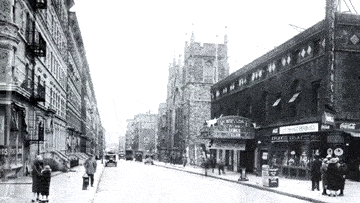
The ballroom – nicknamed the “Renny” – served as a community hub, hosting music icons such as Duke Ellington and Count Basie. The Rens also drew visitors, with hours-long dances held on game nights. The court’s slick floor brought added hazards to games. Dribbling and jumping were problematic. So the team passed. And passed. And passed.
Clarence “Fats" Jenkins was one of the team's first stars – but according to his daughter Ellen Jenkins Harris, he was initially recruited by Douglas due to his business skills, not his court talents. Douglas needed help developing the team’s financial model. Jenkins’ skill at point guard didn’t hurt, either.
"They could not find that last player to round out the team, so my father just did it," Harris said.

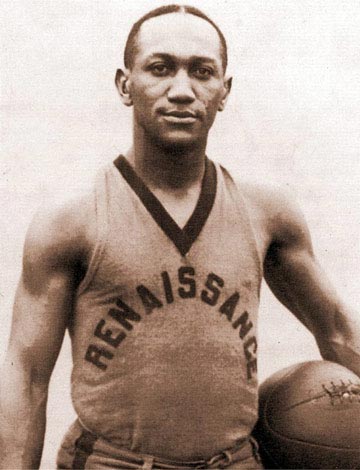
Other original Renaissance players included sharpshooter James "Pappy" Ricks, Frank "Strangler" Forbes and Leon Monde. Center Charles "Tarzan" Cooper joined the team at the end of the decade, setting the stage for the team's greatest successes. Cooper served as the team’s lynchpin, offering suffocating inside play and finding open teammates.
Many of the team’s games featured match-ups against all-white teams. Those games often drew the biggest crowds. During the 1920s, one white team was better than all the others: the Original Celtics. The Celtics were based in New York (they bear no connection to today's Boston Celtics of the NBA) and featured stars such as Nat Holman and Joe Lapchick. The Rens couldn’t match the Celtics initially, falling during the teams’ early contests. The Renaissance Five finally topped the Celtics in 1925, kick-starting one of basketball's great rivalries.
The rivalry was forged on respect, said Lapchick's son Richard, director of The Institute of Diversity and Ethics in Sport at the University of Central Florida and a prominent civil rights advocate.
“My dad and ‘Tarzan’ Cooper developed a habit that before the game, before the jump ball, they wouldn't shake hands, but they would literally embrace each other and often kiss each other because they wanted fans in those stands to understand this was about more than a hall of fame basketball game for them,” he said.
Acceptance wasn't universal. The Rens requested to join the American Basketball League – then the country's premiere circuit – in the mid-1920s, but was rejected. Only white teams were allowed. In 1937, the Rens hoped to join the upstart National Basketball League. Like the American Basketball League a decade earlier, the NBL turned the Rens away.
Barnstorming Success
The Great Depression was crippling for Harlem, sending unemployment spiraling and shuttering neighborhood businesses. With the Rens’ fan base facing financial hardship and home attendance dwindling, the team took to the road, traveling across the south and Midwest in a bus nicknamed "The Old Blue Goose." The barnstorming trips allowed the team to draw steady income, but the travel was grueling, and the trips forced the Rens to confront the era's racial insensitivities. The team could entertain local crowds. They could compete against white players. But sleeping and eating in white facilities was out of the question.
“They would have to drive into town and not be able to stay at the same accommodations, eat at the same restaurants as the barnstorming white players or patrons in general,” said Claude Johnson, founder of the Black Fives Foundation, a non-profit organization that focuses on pre-1950s black teams.
Police stopped the Blue Goose for minor infractions. Gun-wielding gas station attendants chased the Rens away. The team was forced to drive for miles to find a place to stay. Racism spilled onto the court, too.
"The term that I grew up with was 'net game,' and I just assumed it was because there was a net under the rim, but my dad told me it was because in cities where there was potentially violence threatened during the game, the owners would construct a net around the court so the fans couldn't get to the players and harm the players," Richard Lapchick said.
“Wee” Willie Smith – whose 6’5” height belied his nickname – was recruited by Douglas after catching the owner’s eye during a 1932 game. His daughter, Faith Smith-Foster, said her father was gentle off the court.
“When they were on the road, my dad wrote my mother every day,” she said.
But Smith couldn't avoid in-game hostility, splitting his hand during a brawl in Indian
“They were playing, and the white guys were just after him ... [Opposing players] started to push them and fight them, he said, and so the Rens started fighting back. My father said that he split his hand, almost from the middle finger down, because that’s the only way they could get out,” Smith-Foster said.
Amid the hardships, the miles and wins piled up.


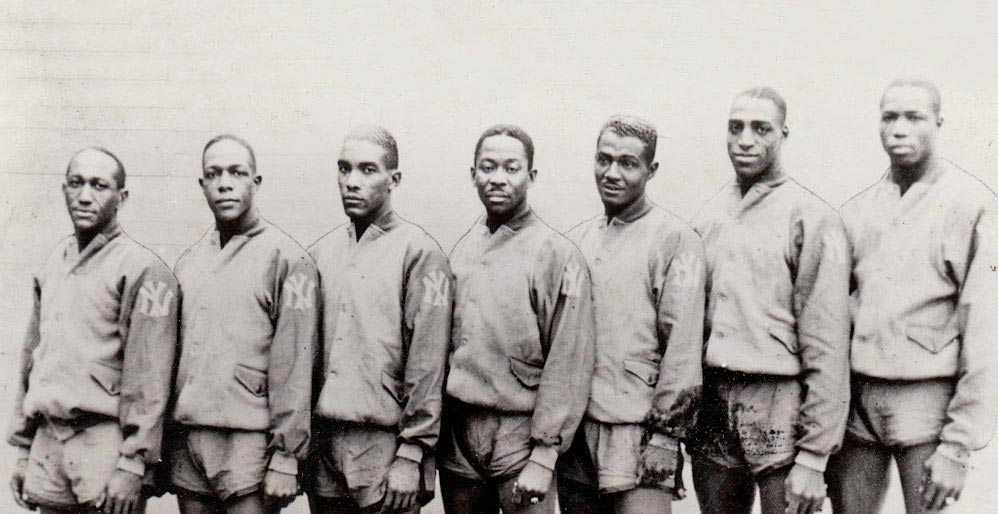
The 1932-33 Renaissance team was one of the finest basketball squads ever assembled. The Rens went 120-8 that season, including 88 straight victories. The team's core, nicknamed the “Magnificent Seven,” featured Jenkins, Ricks, Cooper, Smith, Bill Yancey, John “Casey” Holt and Eyre “Bruiser” Saitch. The winning streak remains one of professional basketball's elusive records.
The 1932-33 squad was enshrined decades later in the Basketball Hall of Fame, one of the first teams to receive the honor.
The team's greatest accomplishment came in 1939, when the Rens and top teams were invited to Chicago for a world professional basketball tournament, the first of its kind. Informal championships had been devised before, but nothing of this scope. The Rens and Harlem Globetrotters – a Chicago-based barnstorming team owned by Abe Saperstein – were paired in the same bracket, ensuring that an all-black final couldn't occur. The teams faced each other in the quarterfinals, with the Renaissance winning, 27-23.
The Oshkosh All-Stars loomed in the finals. The matchup was marked by contrasts: white and black, organized and barnstorming, Midwest and urban. The final wasn't close. The Renaissance won, 34-25. The win entrenched the Rens' place as one of the game's top teams, regardless of race or league affiliation. It also came with a $1,000 purse (about $17,000 in today's money).
Following the title, the Renaissance players were awarded jackets embroidered on the back: “N.Y. Rens Colored World Champions." That terminology didn't sit well with player John Isaacs.
“He said, ‘Colored champs?' The game ain’t got no color. So he took his razor blade and cut the 'colored' part out," said Isaacs' son Alex Isaacs.


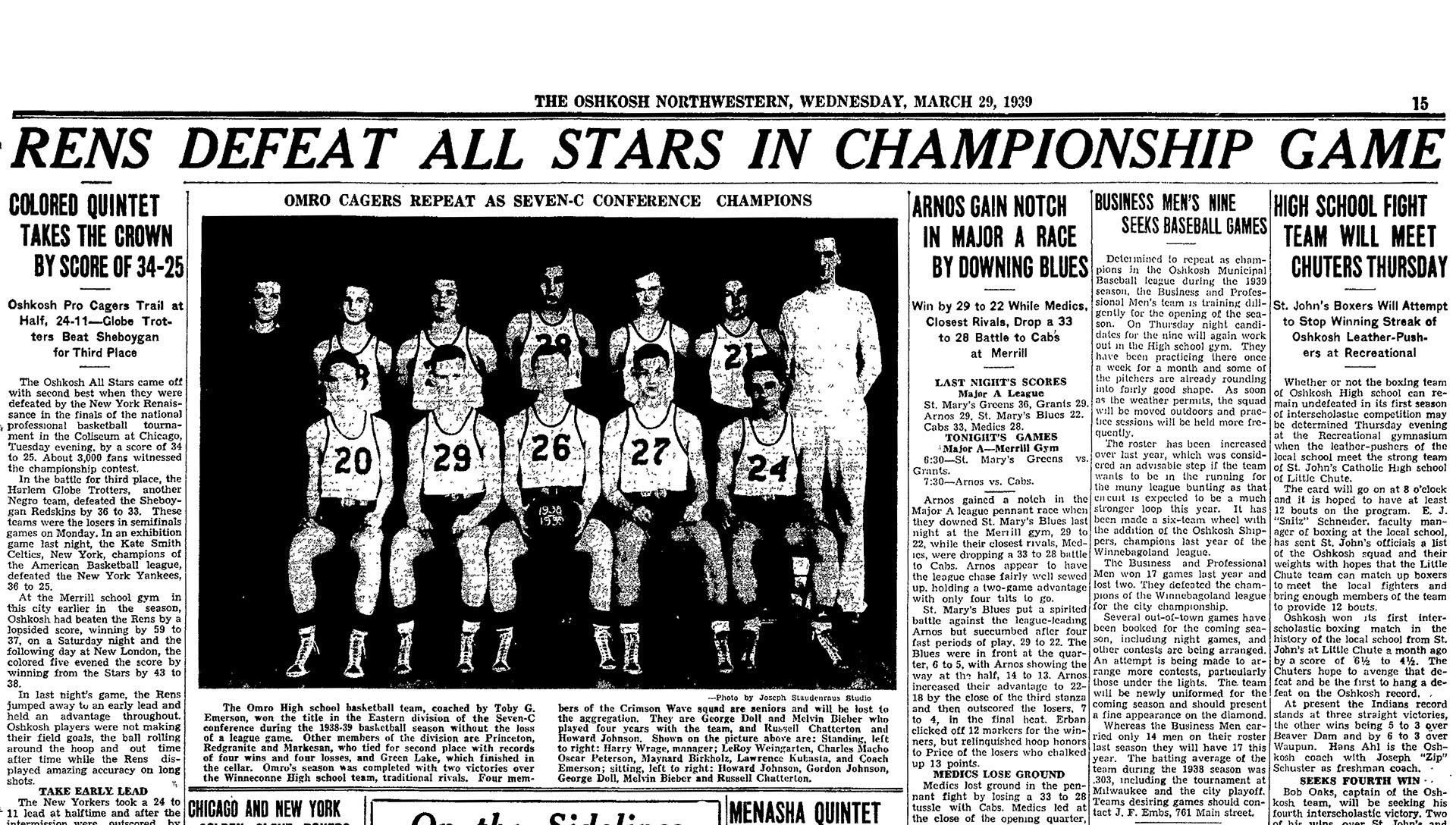
Rise of the Globetrotters
The Renaissance looked to defend the championship at the 1940 world basketball tournament. The Rens breezed past the Canton Bulldogs in the first round, 42-21. A familiar foe, the Globetrotters, loomed in the quarterfinals.
A standing-room crowd of 6,000 packed Chicago's Madison Street Armory. The Globetrotters won, 37-36, eliminating the Rens on the way to a tournament title, an outcome that foreshadowed the divergent paths of the two teams. As the Rens faded from view in the 1940s, the Globetrotters achieved basketball glory, drawing increased popularity due to in-game stunts and tricks.
War, economics and pro basketball's shifting structure also contributed to the decline of the Renaissance Big Five. The team was forced to ration gas due to World War II, resulting in a restrictive travel schedule that reduced the Rens' income opportunities.
Douglas hoped to finally latch onto a pro league in the fall of 1947, months after Jackie Robinson broke Major League Baseball's color barrier. He drove to Philadelphia to meet with team owners from the National Basketball League.
"When [league president Ike] Duffey told me they wouldn’t let me in their league, it took a lot out of me,” Douglas told Sports Illustrated in 1979.
The Rens’ chance for organized basketball finally came in 1948, but league entry marked a Pyrrhic victory. By that point the NBL was losing appeal (and talent) to the upstart Basketball Association of Americ After the Detroit Vagabond Kings folded operations, the NBL offered the Rens a spot in the league, but the opportunity came with a catch – the Rens would have to move to Dayton, Ohio, since the ballroom facility was not adequate for league play.
The team agreed, but the Rens struggled in the new arrangement, failing to draw fan support and finishing the season with a 14-26 record. At the end of the season, the NBL and BAA merged to form the NB The Rens were excluded.
Douglas, facing a crossroads, sold the team to Saperstein.
Saperstein used the Rens as a secondary club to his prized Globetrotters in the early 1950s. The Rens eventually disbanded, a slow and quiet end after three decades, more than 2,000 victories and countless miles on the Old Blue Goose.
As the Rens faded from consciousness, the ballroom facility followed suit.
The building was used for various functions through the 1950s and 60s, but its significance dimmed as blacks were allowed to frequent other facilities in the city. A fire broke out at the ballroom in 1979, and subsequent development plans were thwarted by ownership battles and funding deficiencies.
After decades of false starts and faded potential, the property was sold in 2014 for $15 million, according to city registrar’s office records. A glitzy mixed-use building is planned for the site.
Developers and community activists have met in recent months, hoping to preserve salvageable portions of the building, with a focus on the red brick façade and Hispano-Moresque tiles.
But the extent of the decay, the reality of what’s been lost grows apparent inside the building. Dirt and garbage covers the ground, with wooden boards strewn about. Exposed surfaces are rotted and rusted, the paint chipped and peeled. Piles of bricks sit where walls used to be.
Portions of the ceiling hang, lifeless and limp, and sunlight pokes through gaps in the roof, spotlights illuminating the place where the greatest basketball team in the world once played.
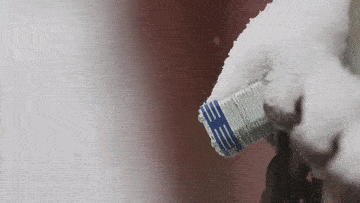
Multimedia by Evan Simon and Ronnie Polidoro
